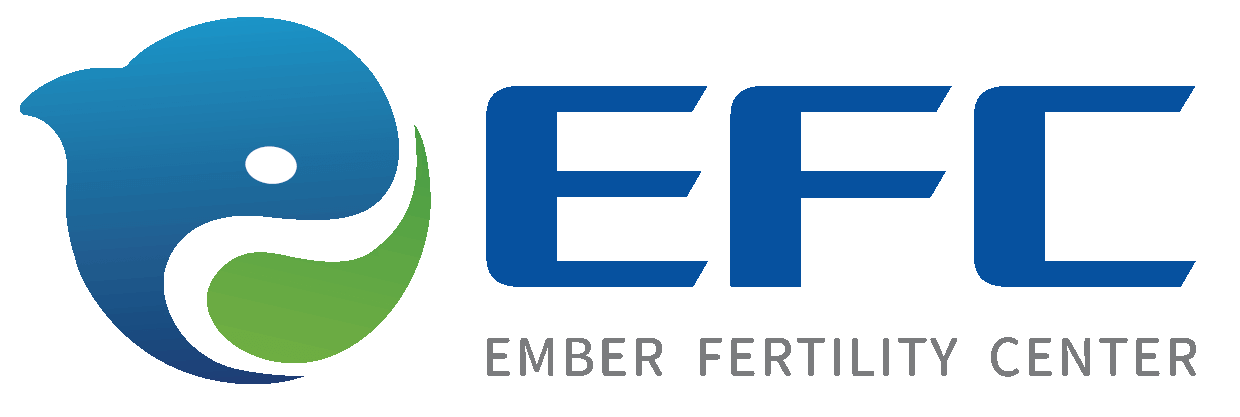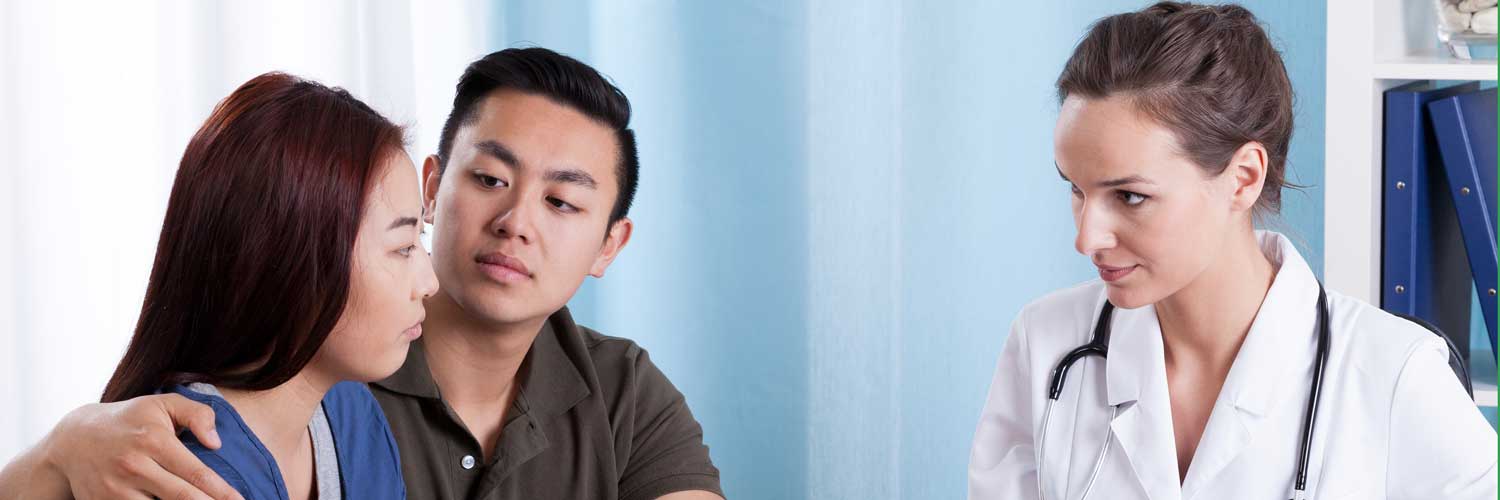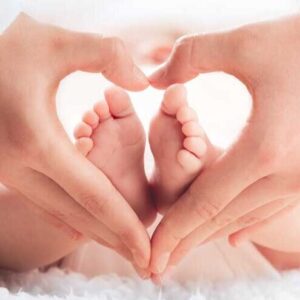Key points to uterine fibroids
- Uterine fibroids are noncancerous tumors that form in the muscle tissue inside the uterus (womb).
- These fibroids, which about 20% of reproductive age women have, can cause symptoms that vary in intensity and include pressure in the pelvic area, heavy menstrual bleeding and backaches.
- Fibroids can also affect fertility in several ways, depending on their size and location.
- Our fertility specialist, Dr. William Freije, can evaluate if the uterine fibroids are causing trouble conceiving.
- Treatment for uterine fibroids includes surgical removal, medications and both combined. Fibroids can’t be completely cured, but we can reduce their symptoms and effects on fertility.

At Ember, everyone is a VIP – very important patient
And we have a thing for the small things: Each Ember patient gets a dedicated fertility coordinator, a patient’s personal care guide through every clinic detail, from the very first phone call to meeting your little miracle.
What are uterine fibroids (leiomyomas)?
Uterine fibroids form when one cell in the wall of the uterus grows to form a noncancerous tumor. These tumors, also called leiomyomas or myomas, are common, occurring in about 20% of reproductive age women, according to the American Society for Reproductive Medicine (ASRM).
Uterine fibroids, which usually occur as more than one at a time, can alter the size and shape of the uterus and sometimes the connecting cervix. This can cause symptoms and also infertility.
ASRM estimates 5%-10% of women with infertility also have fibroids. Location and size of fibroids can determine if they will cause infertility (see How uterine fibroids cause infertility below). Most women with fibroids are not infertile.
Cause of uterine fibroids & risk factors
The cause of uterine fibroids is not completely known. But doctors think that heredity and hormone issues are involved. For example, fibroids need estrogen to grow and can shrink in women after menopause when estrogen levels decrease.
Women of reproductive age are at an increased risk for this condition. Black women have a higher risk of developing them than other women. Other risk factors include obesity, poor diet and alcohol consumption.
Types of fibroids
There are three main types of these fibroids, related to their location.
Subserosal fibroids
These are the most common type, composing 55% of all uterine fibroids. They form on the uterus’ outer wall underneath the serosa covering and grow outward.
Intramural fibroids
These are the second most common type. Intramural fibroids occur in the uterine wall’s layer of muscles (intramural in medicine means within the walls of an organ).
Submucosal fibroids
These are less common, comprising only 5% of uterine fibroids. Submucosal fibroids are located in the endometrium, which is the inner lining of the uterus.

How uterine fibroids cause infertility
- Fibroids can alter the uterus’ shape, restricting the sperm that needs to travel through the uterus to the fallopian tubes, where egg fertilization occurs.
- Changes in the shape of the uterus can affect the movement of an embryo during implantation.
- Growths can block the fallopian tubes, which can prevent a fertilized egg from traveling to the uterus for implantation.
- Uterine fibroids can affect the size of the uterus’ lining, which is where the embryo implants for pregnancy.
- The flow of blood to the uterus can also be restricted as a result, which can lead to implantation and development problems for the embryo.
- Fibroids present during pregnancy can cause miscarriage and preterm birth.
Uterine fibroid symptoms
Fibroids don’t always cause symptoms, and many women don’t ever know they have them. Uterine fibroid symptoms can include:
- Heavy or prolonged menstrual bleeding.
- Pain in the pelvic area or a sense of pressure there.
- Backaches.
- Constipation.
- Frequent urination.
Women should see a doctor if their pelvic pain persists, they have trouble emptying their bladder, their period bleeding is excessive or they experience bleeding between periods.
Diagnosing uterine fibroids
Couples having difficulty conceiving should be evaluated by a fertility specialist to determine if the conception issues are related to the uterine fibroids. If our specialist, Dr. Freije, suspects fibroids, he will conduct a pelvic examination to confirm their presence.
Further diagnostics can include imaging tests such as an ultrasound or MRI. Hysterosalpingography, which utilizes a dye and ultrasound, can detect fibroids.
Hysteroscopy
Hysteroscopy may also be used. This involves a thin tube with camera inserted through the vagina and cervix into the uterus to provide our doctor with an internal view.
Laparoscopy
This surgery is also used to inspect inside the uterus. This is similar to hysteroscopy but the viewing device is inserted through small incisions in the abdomen. With both hysteroscopy and laparoscopy, our fertility specialist can conduct surgical removals at the same time, utilizing special instruments.

We have a thing for the small things
From our world-class clinic, with every element designed for the patient, to our specialist seeing each patient at every visit, the entire Ember staff is attuned to the tiniest of details.
Uterine fibroid treatment
We generally recommend treatment if the symptoms are bothersome or if infertility is present. Uterine fibroids cannot be cured, and we can only manage the symptoms. Our fertility specialist, in conjunction with patient discussions, will determine how best to treat this condition depending on the fibroid’s size and location.
Medications
Medications can affect the hormones that regulate a woman’s menstrual cycle and reduce symptoms by shrinking the fibroids. Gonadotropin-releasing hormone (GnRH) agonists are a primary medication that blocks the production of estrogen and progesterone. This stops menstruation and shrinks the fibroids. We may also use other medications.
Since fibroids will grow back once medication is ceased, we generally use medication before surgical correction. In addition, some birth control medications can help treat the condition, but these are not appropriate for women seeking to have a child.
Noninvasive treatment options may also help. These include uterine artery embolization and radiofrequency ablation. Both shrink the fibroids and cut off the blood supply that makes them grow.
Surgical options are most effective for those desiring pregnancy that uterine fibroids are preventing.
Myomectomy
Myomectomy is the surgical removal of the myoma (uterine fibroid). Dr. Freije can perform myomectomy via laparotomy, which uses larger abdominal incisions, or via laparoscopy, a minimally invasive surgery using small incisions. The latter is generally the preferred route.
Hysterectomy
This is the removal of the uterus, meaning pregnancy is not possible after this procedure. As such, it is not a good option for those seeking to have a child. But it may be necessary for those with extreme fibroid issues. Hysterectomy is a solution to uterine fibroid problems, and the fibroids will not come back as there is no longer a uterus.
Risks and considerations of uterine fibroid treatments
Each treatment comes with its own risks and considerations. Hormonal medication, for example, may cause mood swings or hot flashes.
Surgical treatments involve the same risks as most surgeries, including bleeding, scarring, reaction to anesthesia, pain and infection. Our specialist discusses all risks and complications with each patient before they make a decision to undergo any type of treatment.
Following myomectomy, the fibroids can grow back either due to small seedling fibroids the surgeon can’t detect or because new fibroids can grow. The risk for this increases with younger aged women.




